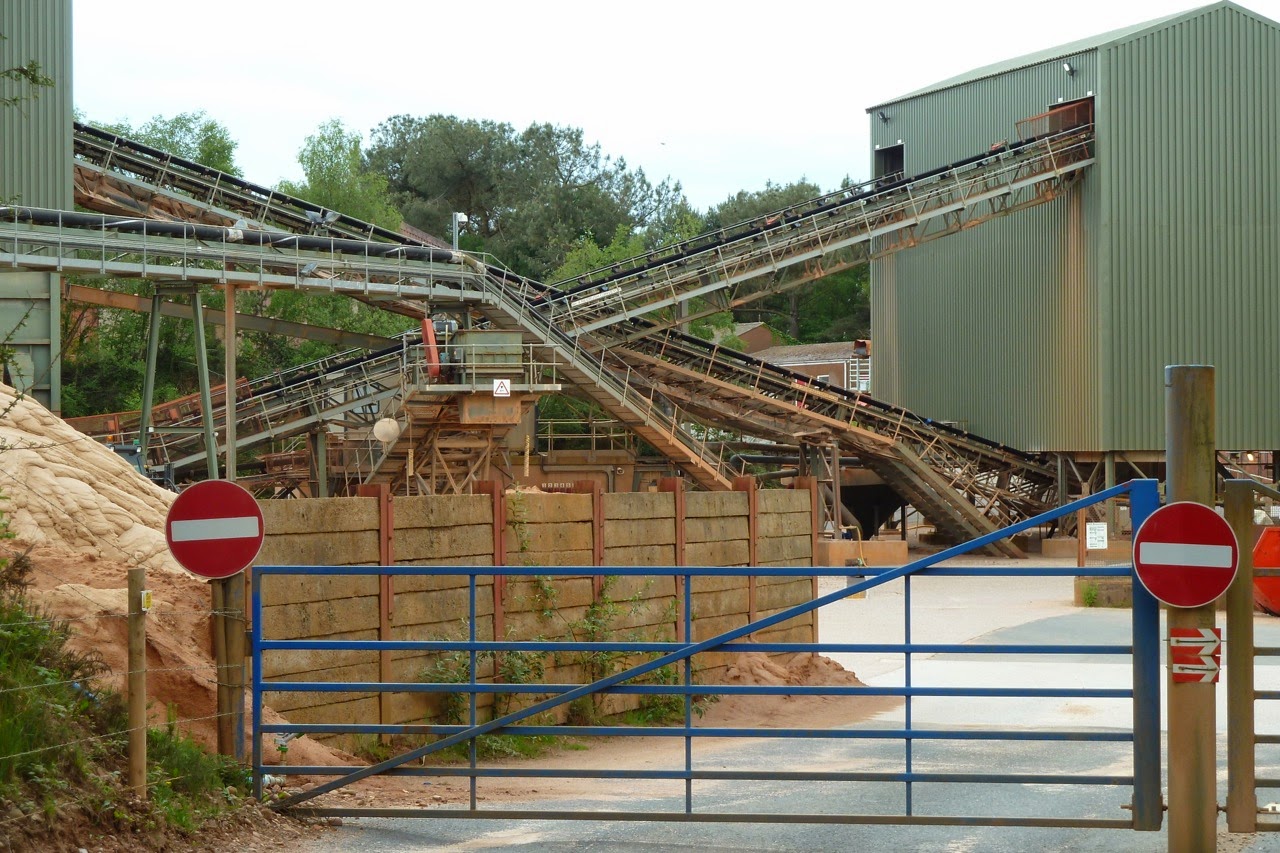Aggregate Industries’ plans for Straitgate Farm rely on processing plant, restoration delays and 5 miles of haul road inside the boundary of the East Devon Area of Outstanding Natural Beauty - so let’s remind ourselves exactly what the NPPF says on AONBs:
115. Great weight should be given to conserving landscape and scenic beauty in National Parks, the Broads and Areas of Outstanding Natural Beauty, which have the highest status of protection in relation to landscape and scenic beauty. The conservation of wildlife and cultural heritage are important considerations in all these areas, and should be given great weight in National Parks and the Broads.
116. Planning permission should be refused for major developments in these designated areas except in exceptional circumstances and where it can be demonstrated they are in the public interest. Consideration of such applications should include an assessment of: the need for the development, including in terms of any national considerations, and the impact of permitting it, or refusing it, upon the local economy; the cost of, and scope for, developing elsewhere outside the designated area, or meeting the need for it in some other way; and any detrimental effect on the environment, the landscape and recreational opportunities, and the extent to which that could be moderated.
The Devon Structure Plan 2001-2016 Policy CO3 and East Devon’s Emerging Local Plan Draft Strategy 40 say much the same thing. Section 85(1) of the Countryside & Rights of Way Act 2000 says all public bodies, DCC included, exercising functions affecting land in an AONB must "...have regard to the purpose of conserving and enhancing the natural beauty of the area of outstanding natural beauty".
So what does the NPPF mean when it says "except in exceptional circumstances"?
The recent case where the Science Museum was granted planning permission for a 67 hectare solar power scheme is an example. Its storage facility at Wroughton Airfield in the North Wessex Downs AONB houses hundreds of thousands of items of national importance. The Communities Secretary ruled that exceptional circumstances existed to justify approval for the scheme, despite objections from English Heritage and others. In the Science Museum’s case, the exceptional circumstance was not the benefit that renewable energy sufficient to power 12,000 homes would bring - but the £200k pa of ring-fenced income generated that would go towards preserving items of national importance:
399. ...given that the Science Museum is seeking to enhance its ability to conserve heritage assets of national importance, weight is given to the income it would derive from the operation of the proposed solar farm.
406. ...The circumstances of the Science Museum’s need for the development are exceptional and outweigh the less than substantial harm that would be caused to the environment and the weight that is afforded to conservation of the landscape of the AONB.
So why on earth was AI permitted in 2010 to continue its environmentally harmful operations in an AONB, with 44-tonne HGVs hauling as-dug material from Venn Ottery over the strictly protected East Devon Pebblebed Heaths (SSSI, SPA, SAC) to Blackhill - when an undesignated industrial site at Rockbeare was 2 miles closer, a site already earmarked for the job in Devon’s Minerals Local Plan 2004?
What were the exceptional circumstances that allowed an isolated processing plant with no attached quarry to continue operating? It’s clear from the report to DCC’s Development Management Committee on the issue that there were none:
6.17 The option to provide fixed plant at Rockbeare has the advantage of the site being outside of the AONB. However, [AI] considered that this would be uneconomical in terms of the investment required due to the limited permitted reserves at Venn Ottery and Marshbroadmoor. Again, if mobile plant were to be used at Rockbeare the range of materials would be less, sales reduced, and the life of Venn Ottery Quarry prolonged...
7.1 On balance the continuation of processing at Blackhill is preferable in amenity terms than processing operations taking place at Venn Ottery Quarry. It is therefore considered that planning permission be granted in accordance with the recommendation of this Report.
However, Rockbeare would have obviously been preferable 'in amenity terms' to the continued processing on Woodbury Common, but DCC took AI at its word and showed it was more concerned about the economic benefits that would flow to a Swiss cement conglomerate than the environmental benefits that would flow to the AONB and nature conservation.
Because of this decision, and AI's consequent lack of investment in Rockbeare plant that could have handled Venn Ottery, Marshbroadmoor and Straitgate material, the company will be looking to DCC to roll over and make exactly the same decision again in 2015. This cannot be allowed to happen. What exceptional circumstances could there possibly be to allow Straitgate Farm material to be processed eight miles away inside an AONB, when AI has alternative undesignated sites that would result in less HGV miles on Devon roads? Because, as the AONB Unit said in the Science Museum case: "this is not a matter of making a judgement which balances competing interests, but of refusing schemes unless they demonstrably satisfy the obligations of the policy" - the policy which states "permission should be refused for major developments in these designated areas except in exceptional circumstances...".








